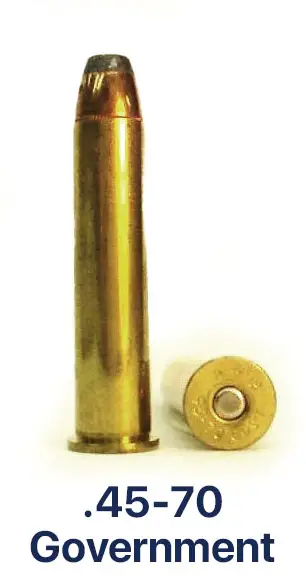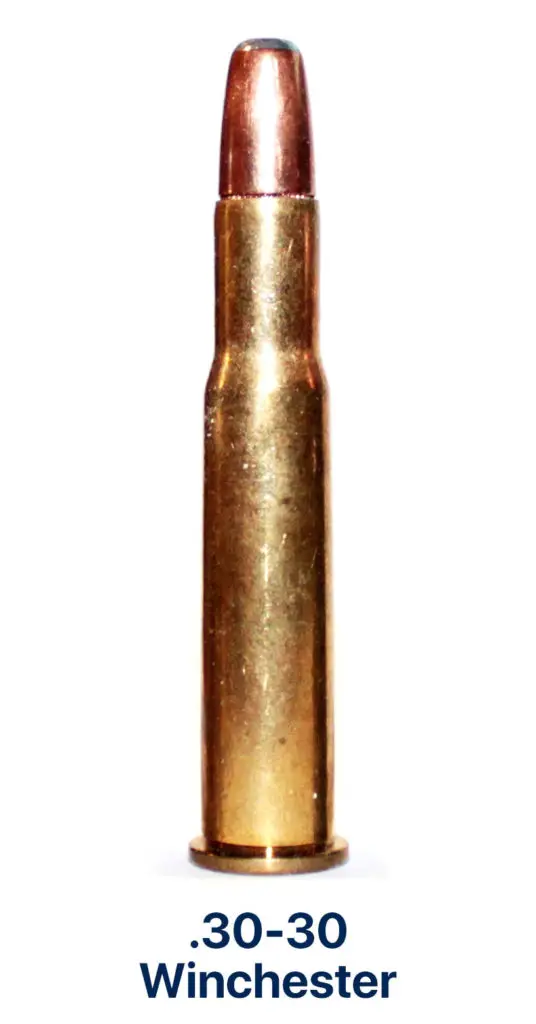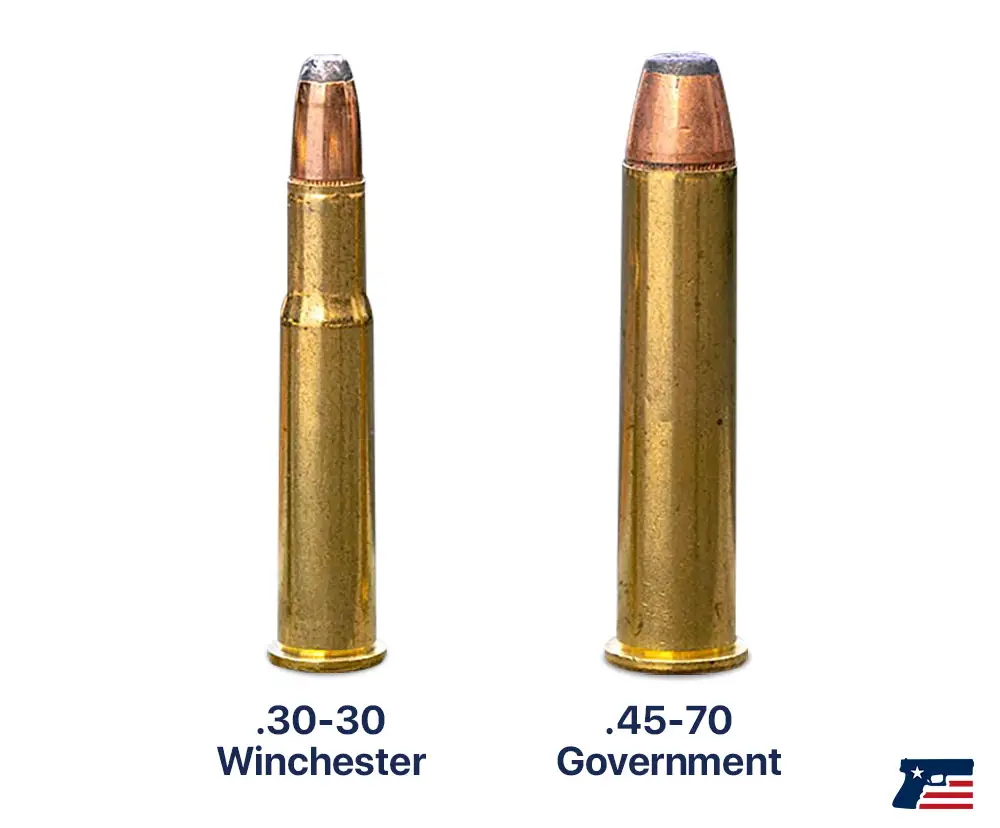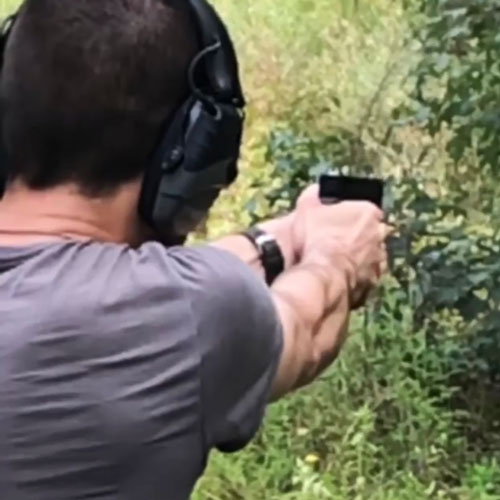If you’re looking for a lever action rifle, you’ll often run into the same few calibers. Two of the most popular are .45-70 and .30-30. These are both great hunting cartridges, and can be used for a lot of the same game. That said, there are also some major differences between them.
Both the 45 70 and the 30 30 have a long track record, and have been in use for more than a hundred years. The main difference comes down to what type of game you’re hunting, and the kind of hunting you’re doing.
So, what makes one of these cartridges better or worse than the other? We’ll start with their history, then talk about what they’re used for, and what makes them different. Here’s everything you need to know about the two most popular lever action rifle cartridges.
45-70 History
The .45-70 has its origin in the late 1800s. Metal cartridges were a relatively new innovation, and the US Army had been using the .30-40 Krag. The .45-70 first debuted in the army in 1892, with that year’s version of the Springfield rifle. This newer, heavier cartridge saw action throughout the Spanish-American War and the Philippine Insurrection. Thanks to its popularity with the troops, the .45-70 soon became popular in the civilian market as well.
Incidentally, the name .45-70 comes from the caliber and the powder weight. The caliber is .45, and the original cartridge used 70 grains of black powder. Hence, .45-70. Due to its original use as an official military cartridge, it’s sometimes also known as the “.45-70 Government”.
Specs

| Date Designed | 1873 |
| Case Type | Rimmed, straight |
| Bullet Diameter | .458 in (11.6 mm) |
| Case Length | 2.105 in (53.5 mm) |
| Neck Diameter | .480 in (12.2 mm) |
| Base Diameter | .505 in (12.8 mm) |
| Rim Diameter | .608 in (15.4 mm) |
| Rim Thickness | .070 in (1.8 mm) |
30-30 History
The original .30-30 was a civilian round developed by Winchester in 1895. It was one of the first smokeless powder cartridges, and Winchester marketed it as the “.30 Winchester Smokeless.” Marlin soon introduced a .30-30 of their own, but simply called it a “.30-30,” so as not to have to put their competitor’s name on their cartridges. Nowadays, you’ll still see a lot of .30-30 cartridges labeled as “.30-30 WCF,” which is short for Winchester Center Fire.
Specs

| Date Designed | 1895 |
| Case Type | Rimmed, bottlenecked |
| Bullet Diameter | .308 in (7.8 mm) |
| Case Length | 2.039 in (51.8 mm) |
| Neck Diameter | .330 in (8.4 mm) |
| Shoulder Diameter | .401 in (10.2 mm) |
| Base Diameter | .422 in (10.7 mm) |
| Rim Diameter | .506 in (12.9 mm) |
| Rim Thickness | .063 in (1.6 mm) |
| Max Pressure | 42,000 psi (290 MPa) |
Uses
In many respects, the .45-70 and the .30-30 overlap. They’re both great for medium game like deer, hog, and black bear. They’re also both serviceable at 200 yards, which is plenty long for most hunting applications.
That said, the .45-70 is a more powerful cartridge. While this isn’t an issue for medium game, it can give you better performance when you’re hunting big game. If you’re hunting elk, brown bear, or moose, stick with the .45-70.
Major Differences
So, what is it that sets these two cartridges apart? There are a number of factors, but the four most important are the size, cost, velocity, and energy. Let’s look a little closer at all four.
Size
The .45-70 is significantly larger.
At .458 inches in diameter, the bullet itself is almost half again as fat as the .308-inch .30-30. The most noticeable difference between the .45-70 and the .30-30 is the size when you put the two of them side by side.
Despite the wider bullet, the .45-70 cartridge isn’t all that much wider. It’s .608 inches in diameter, compared to the .506-inch .30-30 Winchester. As a result, the .30-30 looks even slimmer than it is, with a comparatively narrower-looking neck. The height of the cartridges is identical, at just over 2 ½ inches.
That said, thanks to its thickness, the .45-70 is significantly heavier. The typical .45-70 weighs somewhere between 250 and 400 grains, while the average .30-30 is between 125 and 170 grains.

Cost
The .30-30 is clearly the cheaper round.
The cheapest cartridges come in at around $0.74 per round, and the most expensive come in at around $1.23 per round. There’s less variation with the .45-70 rounds, but they cost significantly more. The cheapest rounds cost about $1.50 each, with the most expensive costing around $1.75
Cost is a relatively minor concern, because you’re probably not shooting a ton of these rounds. At most, you might shoot off a box of ammo when sighting in, then use a handful of rounds in the field. After all, we’re talking about hunting rifle rounds, not plinking rounds.
Velocity
The .30-30 Winchester has a slight edge in terms of bullet speed.
Depending on the exact load, you can expect anywhere from about 2,200 to 3,000 feet per second. By comparison, the .45-70 averages anywhere from 1,500 to 2,500 fps. So while the most powerful .45-70 will be faster than the slowest .30-30, that’s generally not the case.
As a result, the .30-30 has an edge when it comes to long-range shooting. If you plan on shooting more than 200 yards, you’ll see significantly more drop with the .45-70.
By their very nature, lever action rifles tend to have a lower velocity than bolt action rifles. This is for two reasons. First off, the blunted shape of the bullets can create more drag. Secondly, the cartridges aren’t as large as something like a .308, so there isn’t as much powder.
Energy
The .45-70 is the clear winner for energy packed.
When it comes to the type of game you can take, the most important factor is how much energy the round delivers. Here, there’s no comparison. Even the heaviest .30-30 rounds aren’t anywhere near as heavy as the .45-70. Since the difference in velocity is not that great, you’re looking at more energy from the .45-70.
Every cartridge is different. But your typical .30-30 will have around 1,900 foot-pounds of muzzle energy, with around 950 foot-pounds at 200 yards. A comparable .45-70 will have around 2,300 foot-pounds of muzzle energy, which will drop to around 1,300 foot-pounds at 200 yards. Again, every cartridge is different, so check the specs on the box before you buy.
Which Lever Action Rifle is Better?
So, which of these cartridges is the best? For most applications, they’re going to be equivalent. That said, a quality .30-30 is going to outperform a .45-70 at long range. Then again, the greater muzzle energy of a .45-70 is far superior if you’re trying to take big game like moose or elk. But for anything else, you can’t go wrong with either cartridge.

Growing up, John loved learning about the components of firearms and what makes them work, which still intrigues him to this day. He’s a very outdoorsy person, and he loves fishing, hunting, and skeet shooting. He is a firm believer in the Second Amendment and the right to bear arms.
